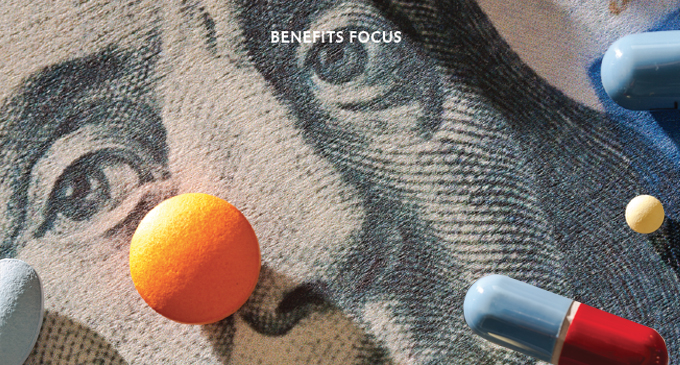Market segment still growing despite high-cost claims
By Jason Hopper
Despite rising costs and shifting funding strategies, growth in the medical stop loss market in the United States is strong and is likely to continue.
Stop loss market premium growth has been continuous since 2014. Premium increases largely have been tied to the growth of self-funded arrangements, and those are not subject to some provisions of the Affordable Care Act (ACA)—specifically minimum loss ratio requirements and health insurer fees.
Market changes
In more recent years, the shift from fully insured to self-funded programs, combined with employers wanting protection from rising claim costs and more expensive treatments, has continued to boost the market.
Many employers, including smaller groups, have opted to self-fund their benefits and seek stop loss protection, given the escalating medical costs and unlimited lifetime maximum that the ACA brought. An average of approximately 60% of private-sector workers have been enrolled in self-insured plans over the past decade or so, and there has been a notable uptick of adoption by smaller and medium-sized employers—those with fewer than 1,000 employees.
Carriers have responded by offering more of this product, which is especially critical for small groups that don’t have sufficient financial flexibility and strength to withstand high-cost claims. More small groups have been purchasing stop loss insurance through level-funded products, which combine the flexibility of a fixed monthly cost for the employer with aspects of self-funding, including stop loss protection.
There have also been some rate increases for the stop loss market itself over the last two years to combat rising claims, which has contributed to the premium growth. As a result, medical stop loss insurance premiums have grown substantially—to $32.8 billion in 2023—as employer groups look for more efficient solutions for healthcare coverage.
More small groups have
been purchasing stop
loss insurance through
level-funded products,
which combine the flexibility of a
fixed monthly cost for the employer with aspects of self-funding … .
Competition and costs
Competition is heavy in the stop loss market, with some new entrants. At the same time, a number of companies that hadn’t been focused on this market have since become more focused. Drivers of stop loss growth include rising volume of high-cost claims, impacts of new gene and cell therapies and medical and prescription drug cost-containment strategies. After two years of rising over 10%, claims moderated in 2023.
The ACA also has been a driver of higher costs as a result of various factors, such as dependent care until age 26, the removal of annual/lifetime limits and coverage of pre-existing conditions, which is all spending required of these employers. Employers have had to assess their reserves and determine whether they can handle that medical spend. Consequently, stop loss protection is an increasingly attractive way for companies to be able to manage the increasing medical costs that they’re seeing.
The increased usage of high-cost specialty drugs to treat a growing number of medical conditions is also elevating pharmaceutical spend. Additionally, innovative new specialty drugs and GLP-1s are unlocking new possibilities for patients but are resulting in cost pressures for health insurers.
The various use cases of GLP-1s, including highly prevalent patient medical conditions such as diabetes and obesity, have expanded usage, especially in the United States. This accounts for a large percentage of global utilization of GLP-1s.
Furthermore, the lack of competitive alternatives to many of these drugs has allowed prices to remain elevated; generic alternatives to GLP-1s are not expected until at least 2026. Specialty drugs and gene therapy will be increasing factors in managing claims and price going forward.
Captives, reinsurance, and other trends
Captive insurance is a small piece of the stop loss market but is growing with rising interest, particularly in the small group market. Captives can provide a layer solution, where the employer retains the first layer, which usually covers routine medical exams. Then the captive absorbs the next layer, which is larger but still a predictable level of claims up to a specific threshold.
This provides smaller employers an opportunity to spread their medical claim risks to a larger pool via the captive and mitigate some of their lack of scale.
Reinsurance also has become a bigger factor in the stop loss market, as the growth in high-cost claims disproportionately impacts this line of business. In the general health insurance market, reinsurance has not been a significant factor because it’s been dominated by large carriers, but the stop loss segment is different with an increasing number of high-cost claims and approvals of exotic gene and cell therapies.
The number and cost of stop loss claims hitting reinsurance has been rising continuously, resulting in a substantial hardening of reinsurance rates. Primary carriers have gradually been raising deductibles for their excess-of-loss reinsurance to balance the rate increases.
Stop loss ceded premium grew over 30% and reached more than $10 billion USD in 2023. Smaller stop loss and major medical carriers have traditionally relied on excess-of-loss reinsurance protection, even before the rise in large claims.
However, in recent years, even large insurers have begun purchasing high-cost claims protection, owing to the growing number, duration and severity of catastrophic claims. Reinsurers in turn are interested in the health segment because it gives them some diversification.
In 2024, HM Life Insurance Company, a subsidiary of Highmark, Inc., announced a reinsurance transaction with Canada Life whereby HM Life will cede up to 80% of certain stop loss policies. The goal of this arrangement is to reduce the capital requirements for the enterprise. HM Life is one of the leading providers of stop loss insurance in the United States.
In terms of specialty pharmaceuticals, the introduction of biosimilars for drugs such as Humira may provide a lower-cost alternative. As more biosimilars are introduced and gain acceptance, insurers may see some cost reprieve.
However, with the continued introduction of new high-cost drugs, including specialty drugs and gene therapy, the health insurance industry will continue to face pharmaceutical cost pressures.
 The author
The author
Jason Hopper is associate director, Industry Research and Analytics, for A.M. Best.






